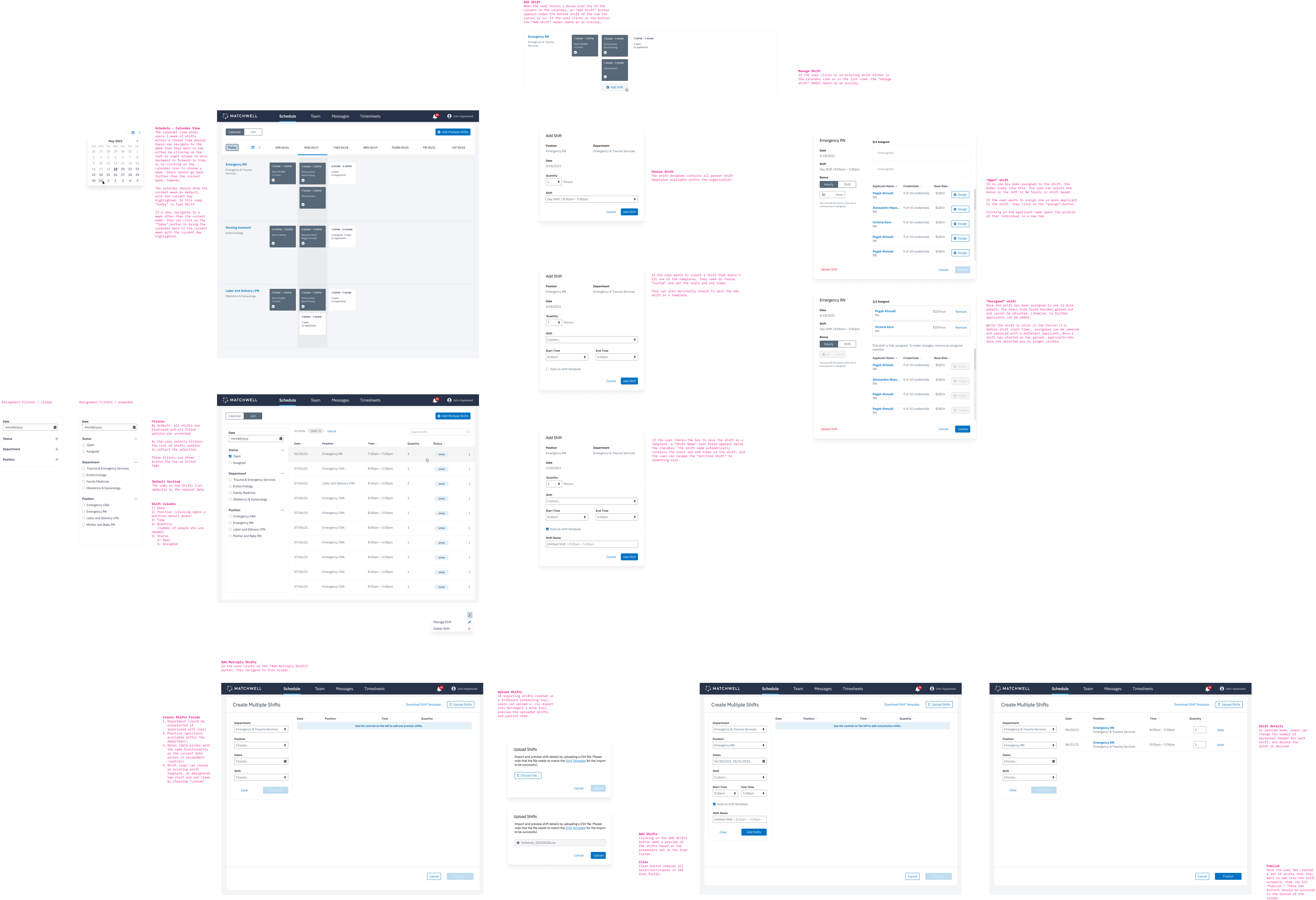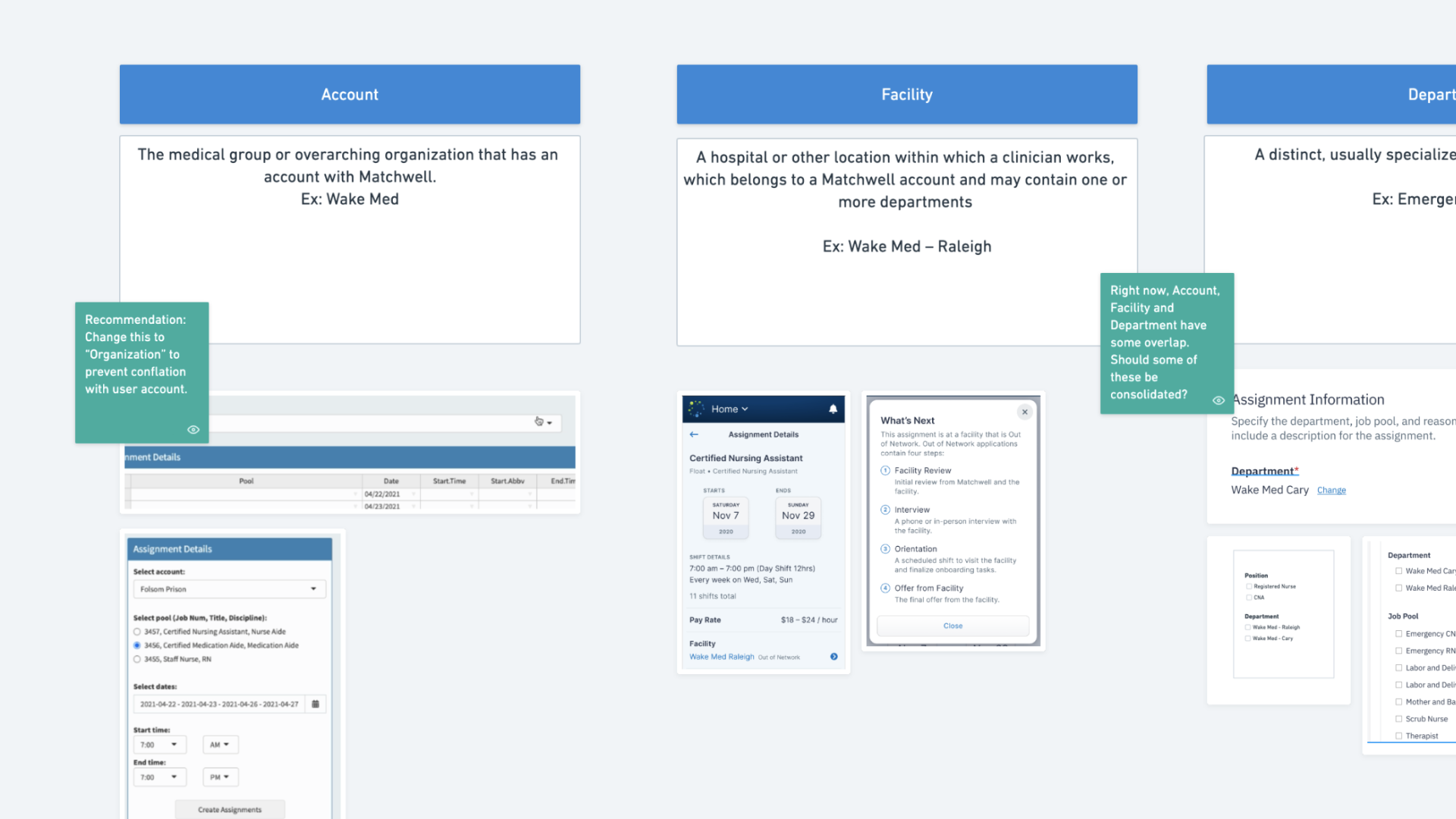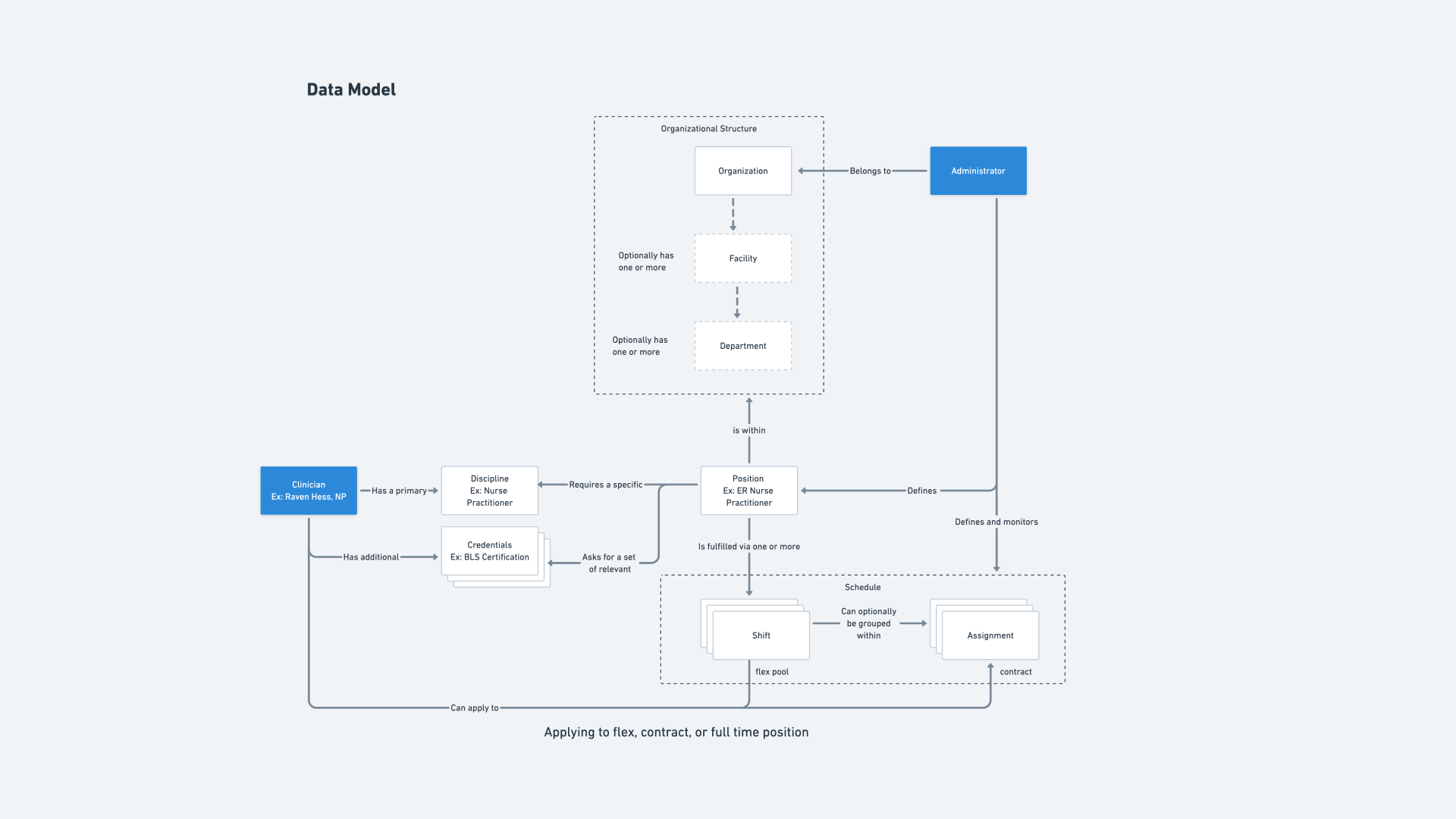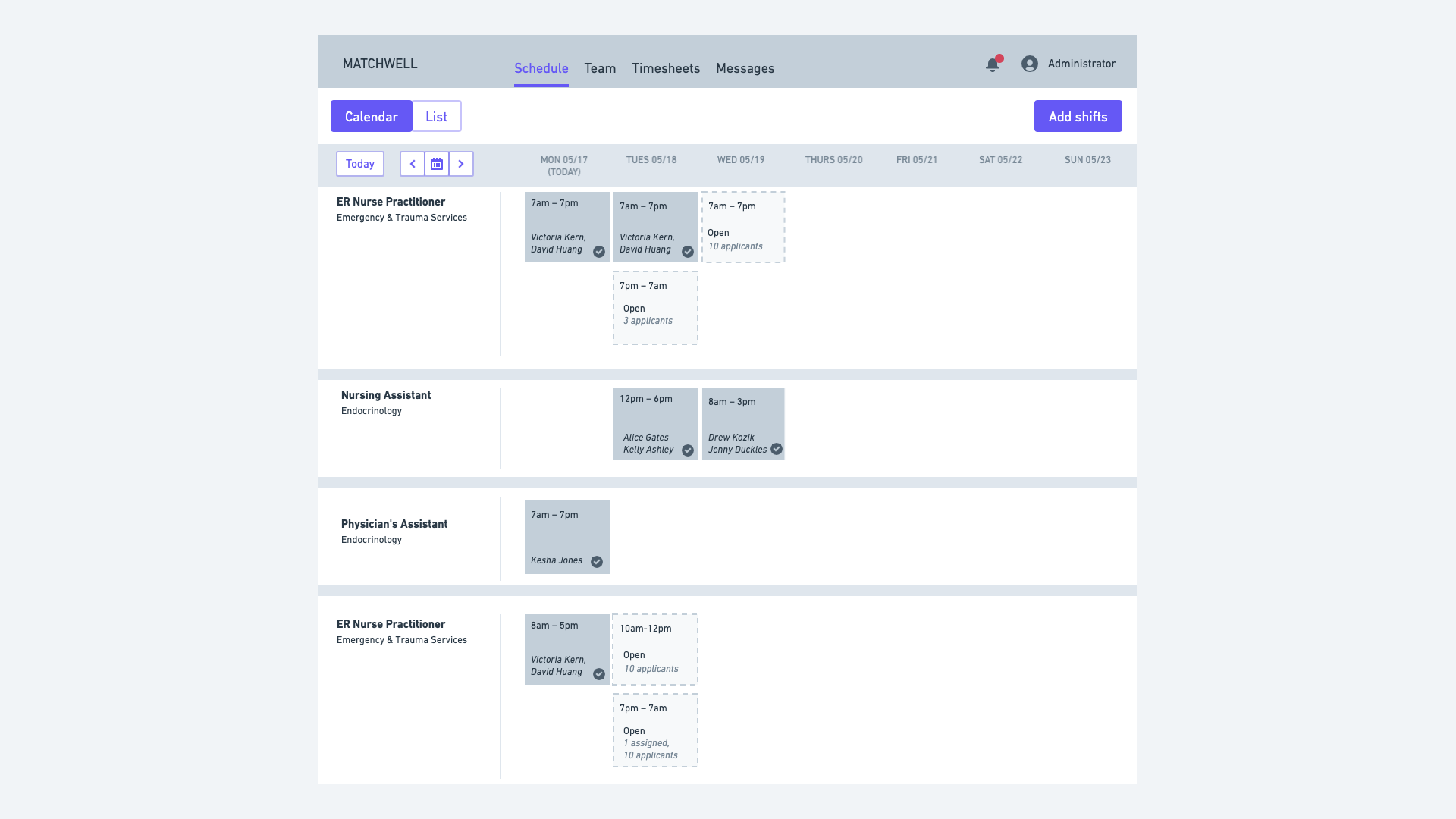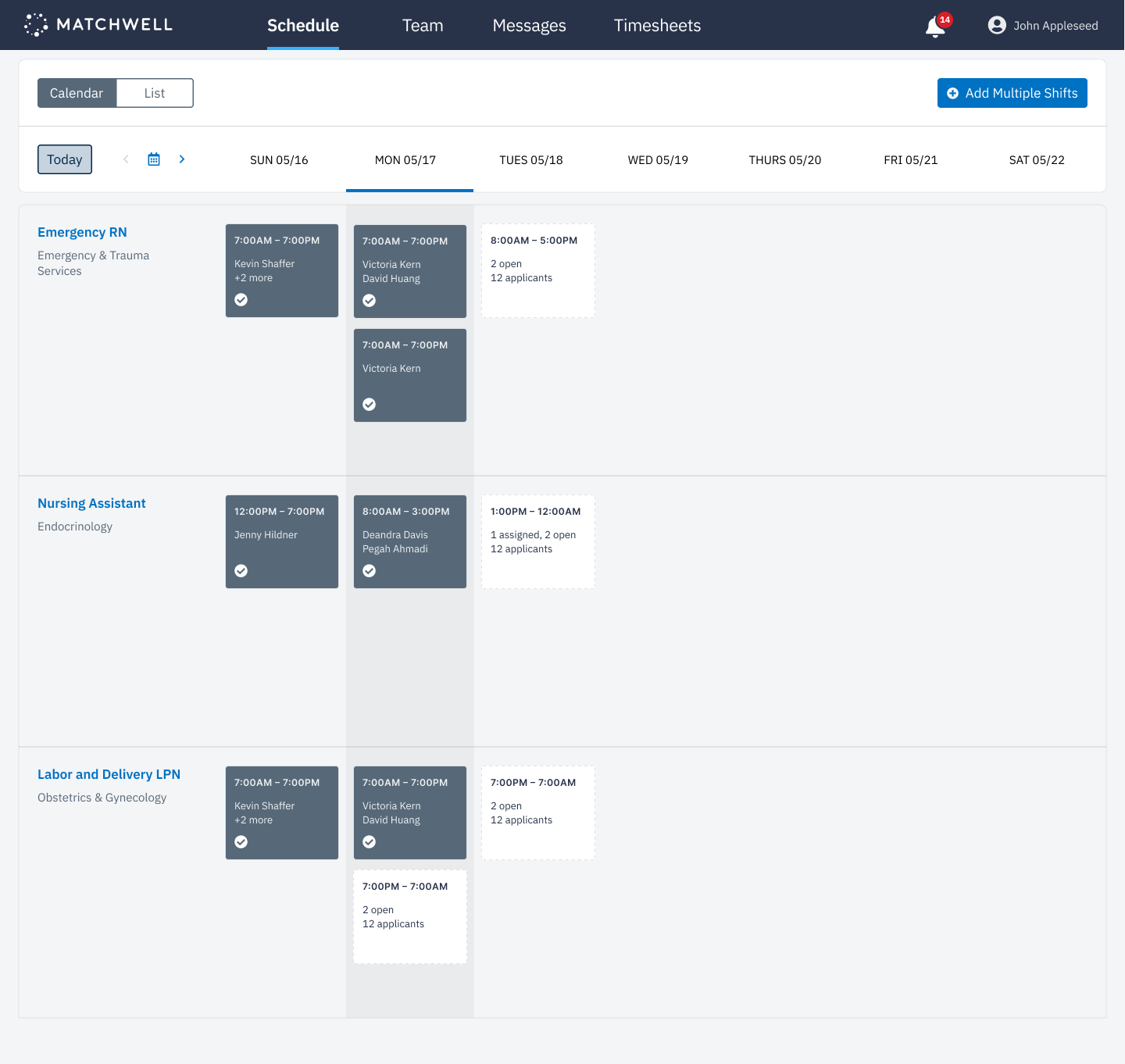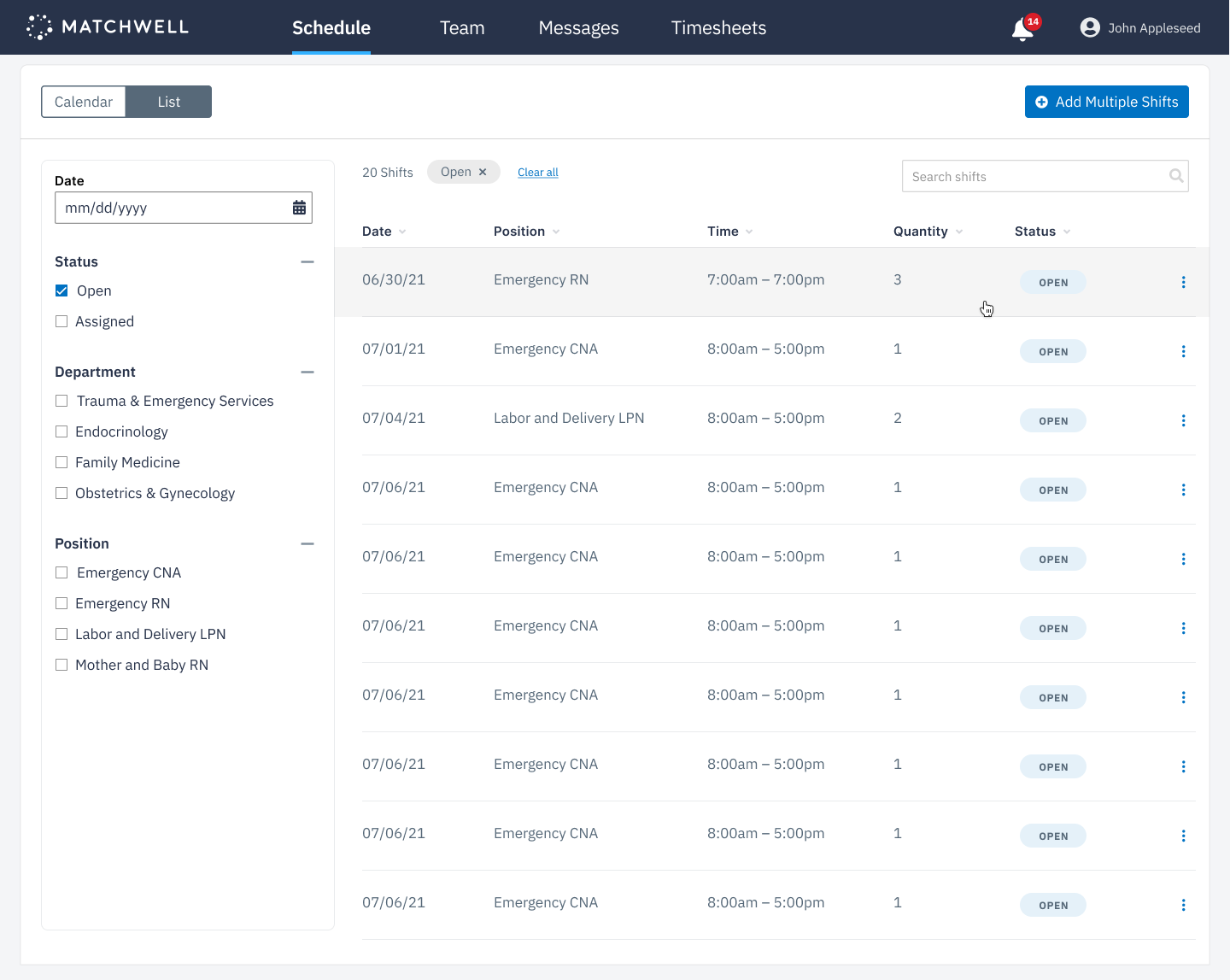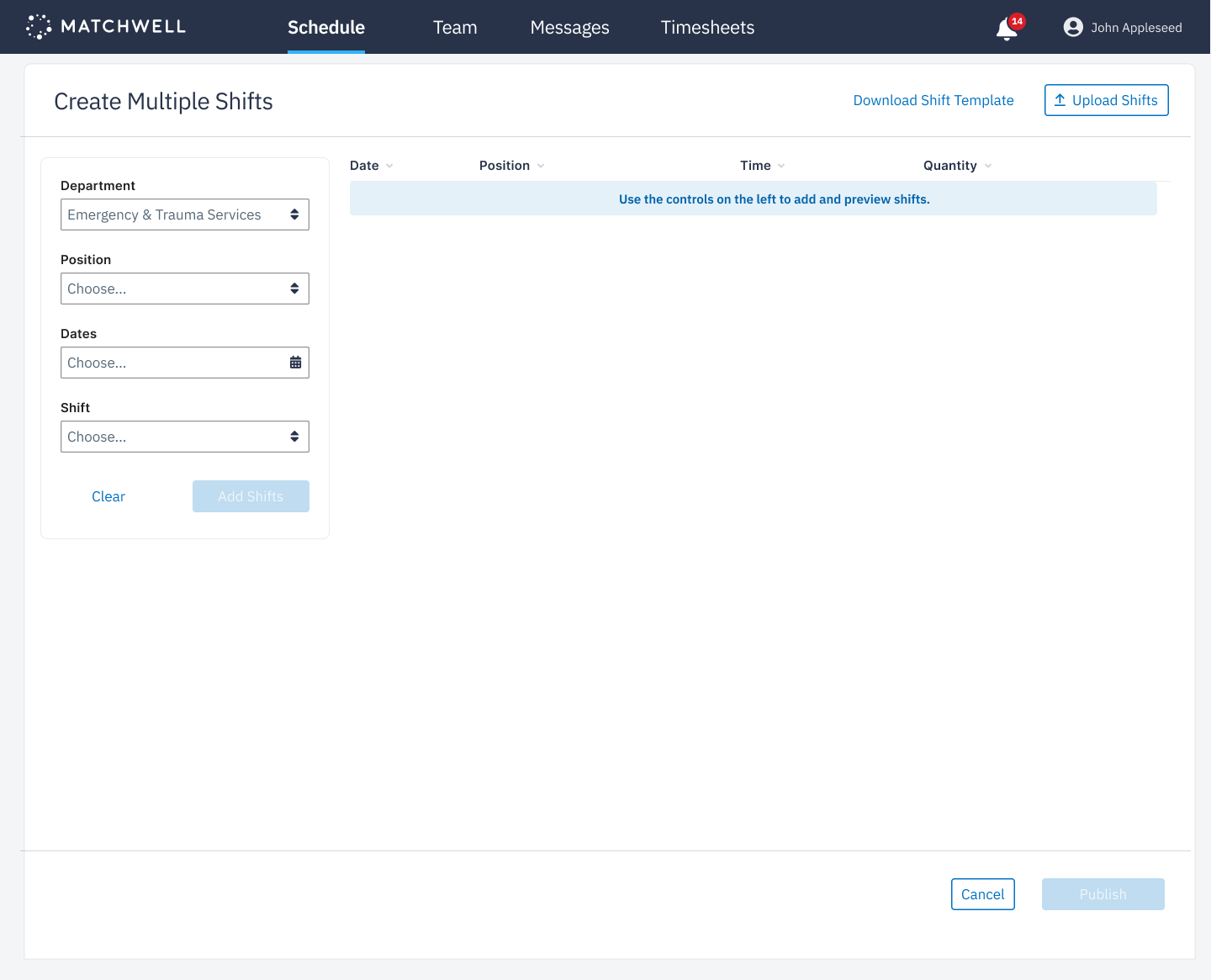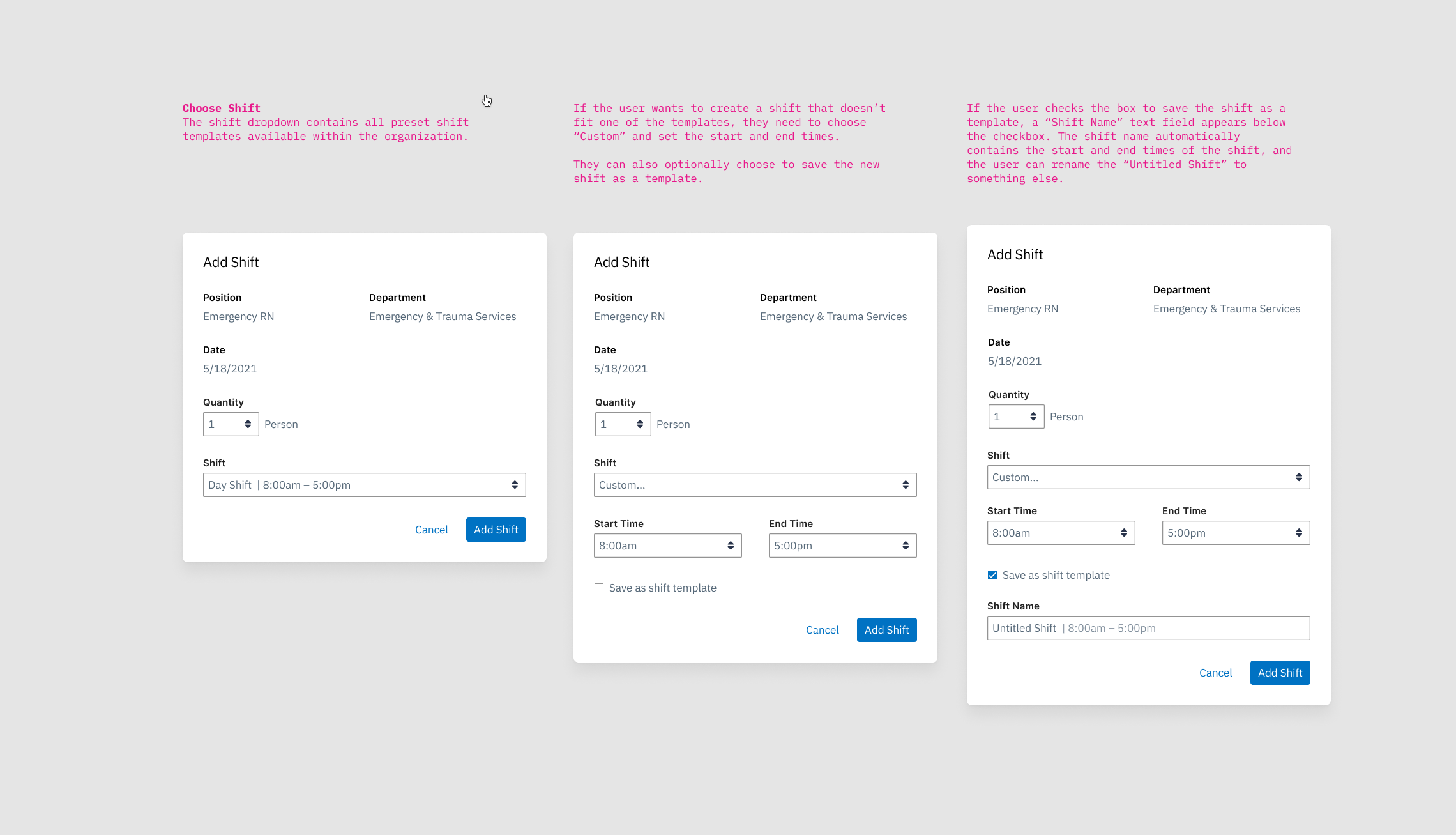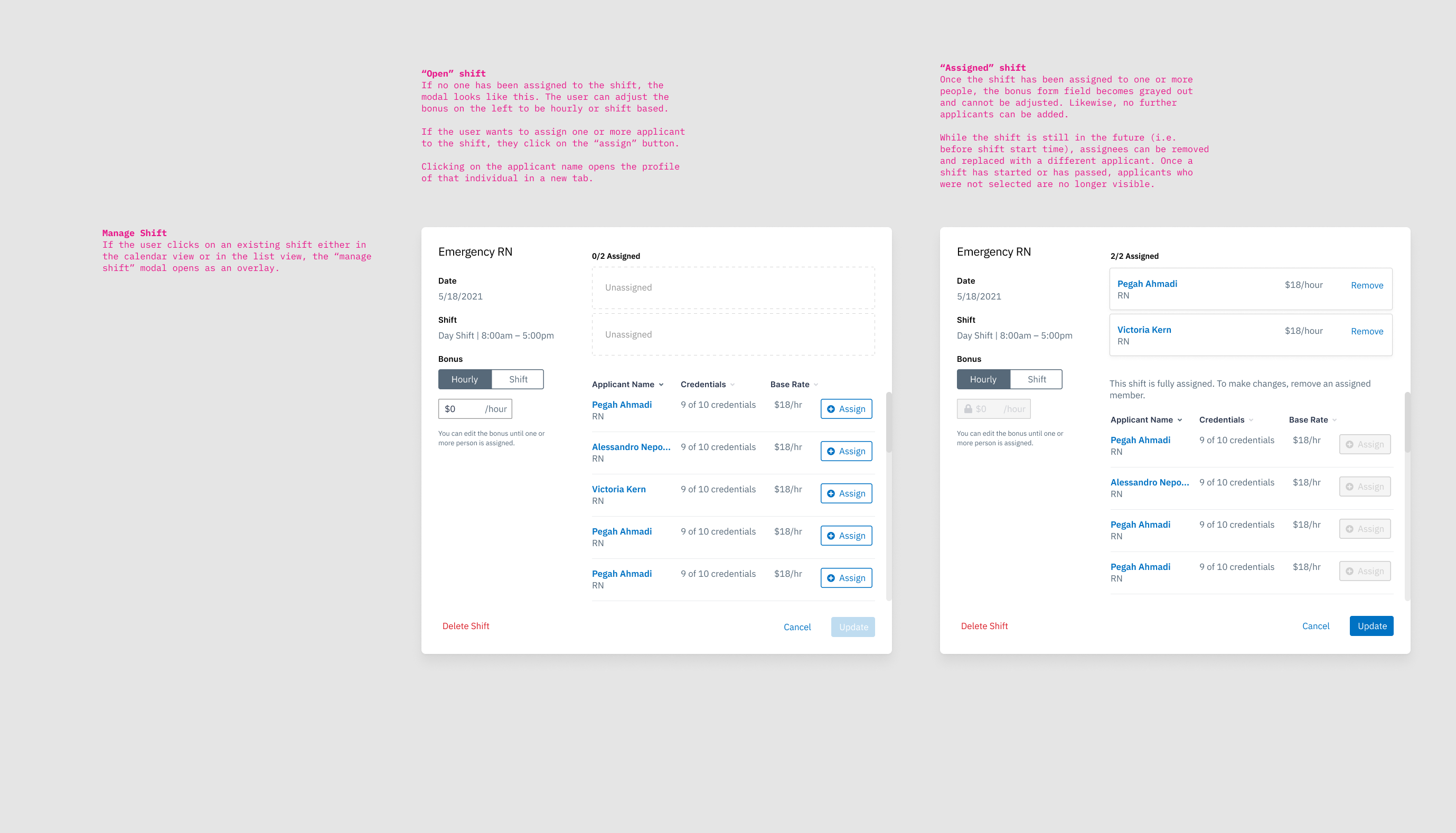overview
Matchwell empowers clinicians by allowing them to directly match with care facilities in need of temporary, contract, or permanent support. As a senior product designer at Viget, I worked directly with the Matchwell team to propose updates to the facility-facing product, which addressed existing pain points administrators had around creating and filling roles using the existing product.
Client
Matchwell
Scope of work
Update information architecture and key flows. Create dev ready designs for updated functionality
Outcome
Updated terminology, data model and designs to better align the product with how facilities staffed roles
the problem
A product built for the exception, not the rule
Matchwell’s hospital clients were using work-arounds within their existing facilities tool to fill healthcare provider roles, because the way the product functioned didn’t meet their actual needs.
Terms were being used inconsistently across the product and within the Matchwell organization, creating confusion
Most clinicians were shift-based or per diem, but the existing model for assignments was better for longer-term contracts
Administrators were not able to assign multiple clinicians to the same shift, in spite of often needing multiple similar positions filled
the approach
Re-architecting the product to match actual workflows
Matchwell’s problem hinged on the product’s fundamental structure, but the engagement was also time-sensitive; I only had two weeks to investigate, propose recommendations and document dev-ready files. As a result, it was essential to efficiently focus work on the pieces that needed to be revisited, and keep key stakeholders aligned every step of the way.
Defining key terminology
The foundational step in the process was to make sure everyone was speaking the same language. Recognizing the inconsistent terminology in use, I quickly audited, defined and disentangled inconsistent terminology in use within the product with key stakeholders. From there, it was easier to move on toward redefining the relationships between the key entities within the Matchwell system to create more flexibility.
Designing a more flexible data model
After aligning on key terminology, my focus shifted to redefining relationships between the way administrators created schedules, and how clinicians applied to them. In the existing model, admins had to define the role and write the assignment description individually for each assignment, and could only create shifts within the context of an assignment. The process was incredibly linear and time-intensive.
To accomplish the flexibility that facilities needed, I separated “positions” or the specific jobs from the assignment process, so that admins could define the open positions once and re-use the requirements for clinicians applying to per diem and shift-based work. I also pulled shift creation out from the assignment flow, so that administrators could create shifts without going through the assignment flow.
Folding the updates into a live product
Because the facility product was actively in use, and this work was just a small part of the full product suite, it was important to determine how the new shift-based functionality should be slotted in, while preserving the existing assignment creation flow for longer term contract work. After getting alignment from the team around the proposed information architecture and a rough wireframe-based prototype, I got to work on designing the new feature set and preparing the proposed functionality for development handoff.
The Result
Within 3 weeks of project start, Matchwell received documented designs and diagrams to implement the changes within their facilities product.
